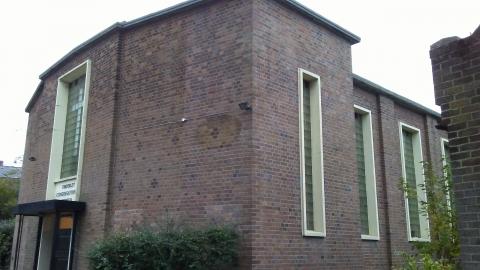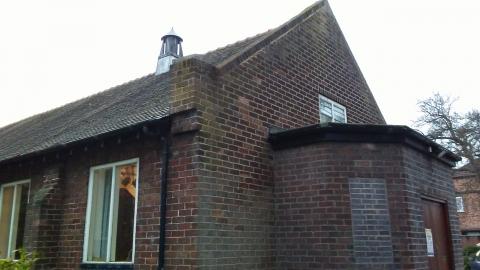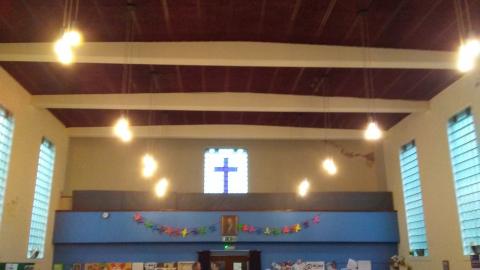Timperley Congregational Church

Timperley Congregational Church is located in that well-heeled part of north Cheshire, within striking distance of both lush countryside and Manchester’s well remunerated employment prospects. I know little of the church; though the minister is an affable chap, it lacks a website and its Facebook page is fairly general. What I can comment on is its architecture. It’s not of the classic, 50s’ Brutalist school, but it does communicate the decade’s austerity. There’s still a hint of the 1930s about it, as though the war years had suspended architecture’s creativity; the aim of the ‘forties was to keep buildings standing and the people who used them alive.

Next to the church building is the fellowship’s original premises, a grimmer-looking edifice from the actual 1930s; a depressing construction from a depressed era. Churches constructed in this early part of the twenty-first century resemble cafes and concert halls, as folk sought entertainment. The Victorians employed gaudy, extravagant designs to show off their wealth and respectability. Timperley’s building was a declaration that even after a terrible war, the church survives; the gospel continues even when its followers are impoverished. The generosity of its natural light, perhaps intended to save money on bricks, is a welcome addition.

Salem Chapel, too, was contructed at a time of economic hardship and austerity. 1817 was known as 'the year without summer', as the crops were washed away before they could be harvested. Perhaps the church is at its strongest when its people are poorest. A church’s architecture, however, does not ultimately matter. Most important is its faithfulness to Christ and its love of people. Thus, a grand cathedral, a country chapel, a hidden room or the corner of a field, may all be beautiful churches.
- Log in to post comments


 Sunday Worship 10.45am & 6.00pm
Sunday Worship 10.45am & 6.00pm